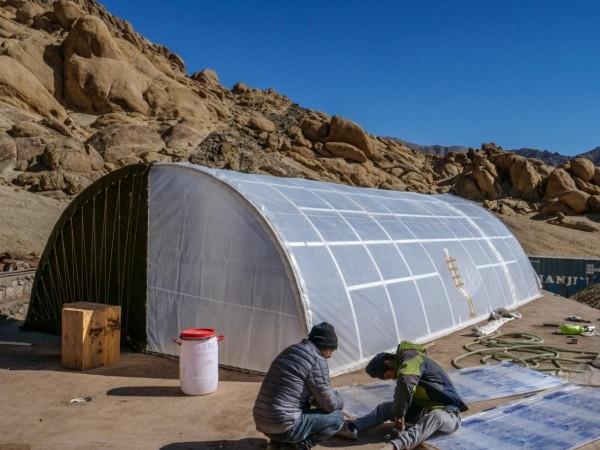The Chinese PLA has started retreating from Pangong Pso Lake which may result in the possible normalization of relations between the two countries. Notably, Ladakh is a part where mercury falls to sub-zero levels in winters. But even in this adverse situation, the Indian Army soldiers were stationed there day and night for the protection of the border.
If any such situation occurs in the future, our army soldiers should not have any problem due to the cold, for this Sonam Wangchuk has prepared a special type of military tent. Wangchuk is the same person on whom the blockbuster movie Three Idiots (3 Idiots) was made starring Amir Khan.

He has devised an idea so that the army personnel deployed in the security of the border will get relief from the severe cold. Wangchuk has made a special type of military tent, which is warm inside even in minus temperature. Wangchuk has named it "Solar Heated Military Tent".
Made in India product
He tweeted on Friday midnight, where the outside temperature was -14 C, the temperature inside the tent was + 15 C. That is, the temperature inside the tent was 29 degrees celsius higher than the temperature outside the tent. One of the highlighting features of this solar-heated military tent is that it works with the help of solar energy.
SOLAR HEATED MILITARY TENT
— Sonam Wangchuk (@Wangchuk66) February 19, 2021
for #indianarmy at #galwanvalley
+15 C at 10pm now.
Min outside last night was -14 C,
Replaces tons of kerosesne, pollution #climatechange
For 10 jawans, fully portable all parts weigh less than 30 Kgs. #MadeInIndia #MadeInLadakh #CarbonNeutral pic.twitter.com/iaGGIG5LG3
Moreover, a complete 'Made in India' product, the tent will also reduce the use of many tons of kerosene to keep the soldiers warm. Around 10 soldiers can live comfortably inside such a tent. Also, all the equipment is 30kgs in weight and portable which can be easily transported from one place to another.

Known for his innovations, Wangchuk has earlier installed a similar prototype at his home. The entire structure is built on a passive solar building design. Windows, walls, and floors are made to absorb, store, reflect, and distribute solar energy in passive solar building design, in the form of heat in the winter and reject solar heat in the summer. This is termed passive solar architecture, since it does not require the use of mechanical and electrical components, unlike active solar heating systems.










